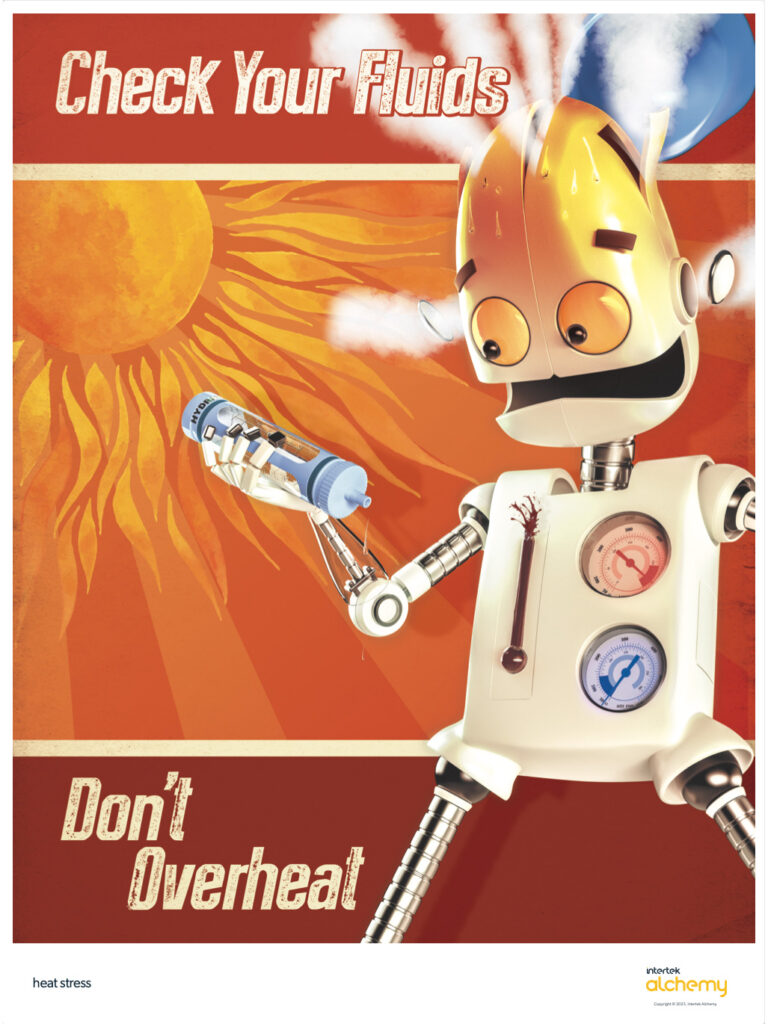5 Ways to Protect Employees During Record-Breaking Heat

Last week’s 4th of July holiday marked the hottest day on Earth since 1979, according to data from two climate tracking agencies that covers multiple decades. Some scientists believe it could have been one of the hottest days in around 125,000 years and expect warmer weather ahead.
Rising temperatures mean higher expectations for manufacturers to update policies and redesign their work environments to ensure employees don’t succumb to heat-related illnesses. According to OSHA, manufacturing accounts for 21.7% of heat-related injuries from 2015 to 2022.
Heat-related illnesses range from heat cramps to heat stroke, which can lead to death. From 2011-2019, the Bureau of Labor Statistics reported 344 worker-related deaths in the U.S. were due to environmental heat exposure. Workplace safety experts believe the actual number of heat-related fatalities may be higher due to under or misreporting as other causes, such as heart attacks.

While state-level safety precautions and requirements might vary, OSHA recommends employers take specific actions to protect employees from heat-related illnesses. Technically, OSHA does not enforce a federal standard for heat stress. However, employers must meet the General Duty Clause requirement to provide a place of employment free from recognized hazards that can lead to death or serious physical harm.
If your workplace struggles to maintain a cool environment for employees, here are a few steps to consider.
Keep shifts short and rotate job functions
On the federal level, OSHA recommends employers offer shorter shifts for newly hired workers who are unacclimated to extreme heat and gradually increase shift length over the first one or two weeks. The agency also recommends employers rotate job functions among workers to help minimize exertion and heat exposure. Also, OSHA encourages employers to implement a buddy system for workers to monitor each other for signs of heat stress.
Know the signs and hydrate
Employers and employees should know the signs of heat-related illnesses and ensure everyone remains hydrated. Trained employees can understand the differences between heat cramps, heat exhaustion, and heat stroke. For example, hot, dry skin or profuse sweating combined with disorientation and slurred speech are signs of a heat stroke requiring immediate, emergency care.
Sometimes water isn’t enough. When your body overheats, it requires electrolytes to cool down. It’s important to emphasize the proper mix of water and electrolyte-rich drinks, depending on the situation. Incorporating sports drinks with frequent hydration breaks can help people cope and avoid heat illnesses.
Train workers on how to protect themselves
It’s also essential to train employees to understand the hazards of excessive heat and protect themselves at all times – on and off work. Be sure they know the symptoms of heat illness, how to apply first aid, and how to manage hazards. Training topics can include, for example:
- Risk factors for heat-related illness
- The different types of heat illnesses and symptoms
- Why frequently drinking small quantities of water is better than drinking large quantities fewer times a day
- Company procedures for responding to heat-related illnesses
- How to report heat-related illness symptoms as soon as they appear
Equip and train employees to use PPE
Employers should help employees dress smart with breathable clothing that cools and protects their bodies. Wide-brimmed hats, sunglasses, and sunscreen can provide additional protection from the sun. Insulated suits and gloves, and reflective clothing can also help reduce the potential of heat stress. Jobs that involve cleaning and servicing confined spaces may need thermally conditioned clothing to help reduce heat-related risks.
Keep employees cool and rested
The best way to protect workers is to cool their work environment whenever possible. Engineering controls such as air conditioning, cooling fans, insulation of hot surfaces, and elimination of steam leaks are a few of the best controls for prevention.
If engineering controls are unavailable, consider administrative controls, such as frequent breaks in an air-conditioned space. Keep water supplies close to the work area so workers are inclined to drink water frequently and stay adequately hydrated all day long. Remember, heat stress can also occur indoors, especially if employees work near hot equipment. These employees must be afforded the same precautions as their outdoor colleagues.
OSHA offers educational tools for heat illness that can be used during team huddles or tailgate meetings. They also offer a free Heat Index app for iPhone and Android phones to provide updates on current temperature and humidity in a particular area.
The app reports the current heat hazards for the day and classifies each heat index risk as low, moderate, or high. It also advises precautions to reduce heat hazards, emergency planning, and response activities.
Intertek Alchemy’s frontline worker safety training courses and digital signage covers many of these steps for heat stress, hot work, and heat exhaustion. Contact us for more information or if you need help developing a training program or assessing your heat safety status.





